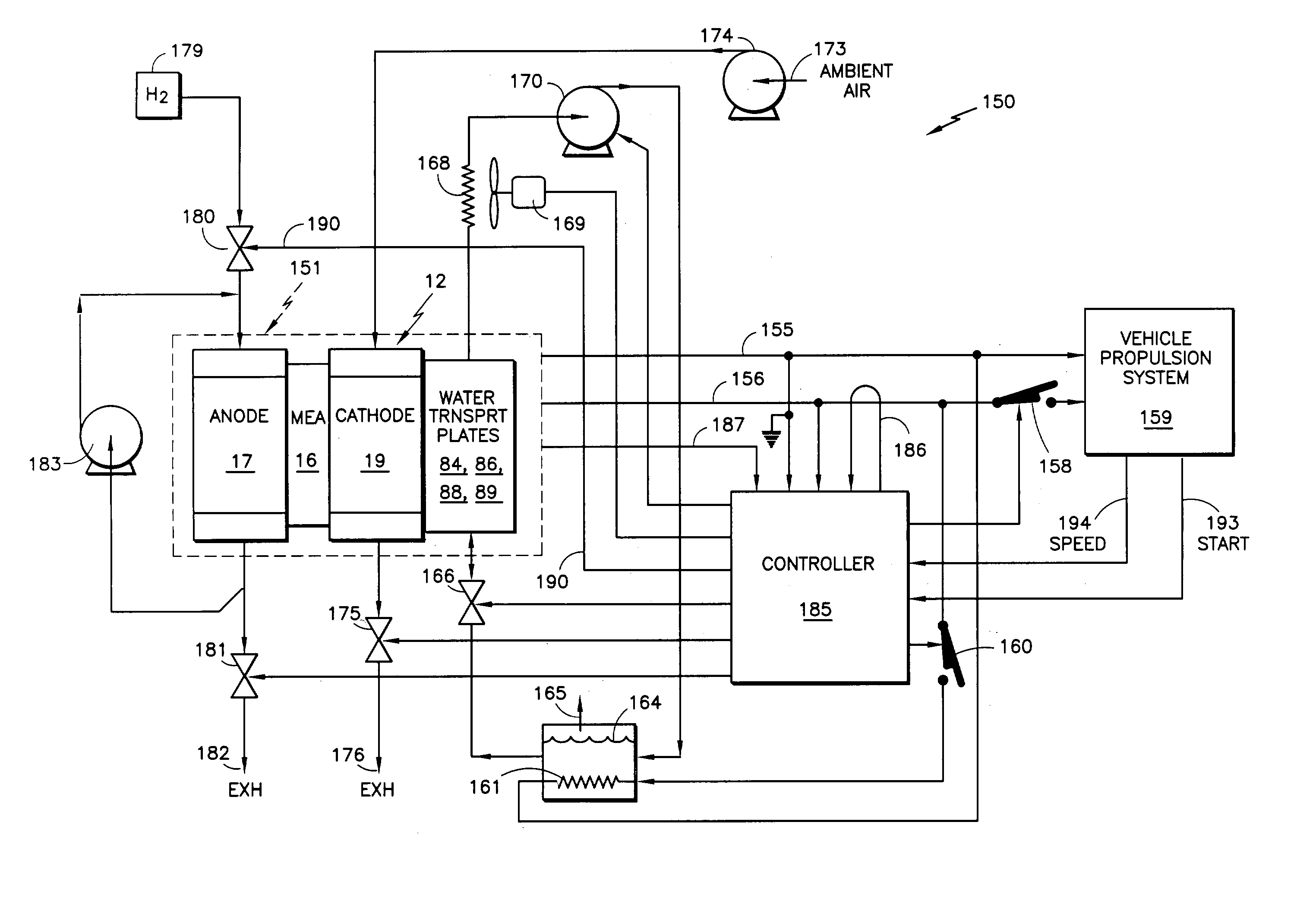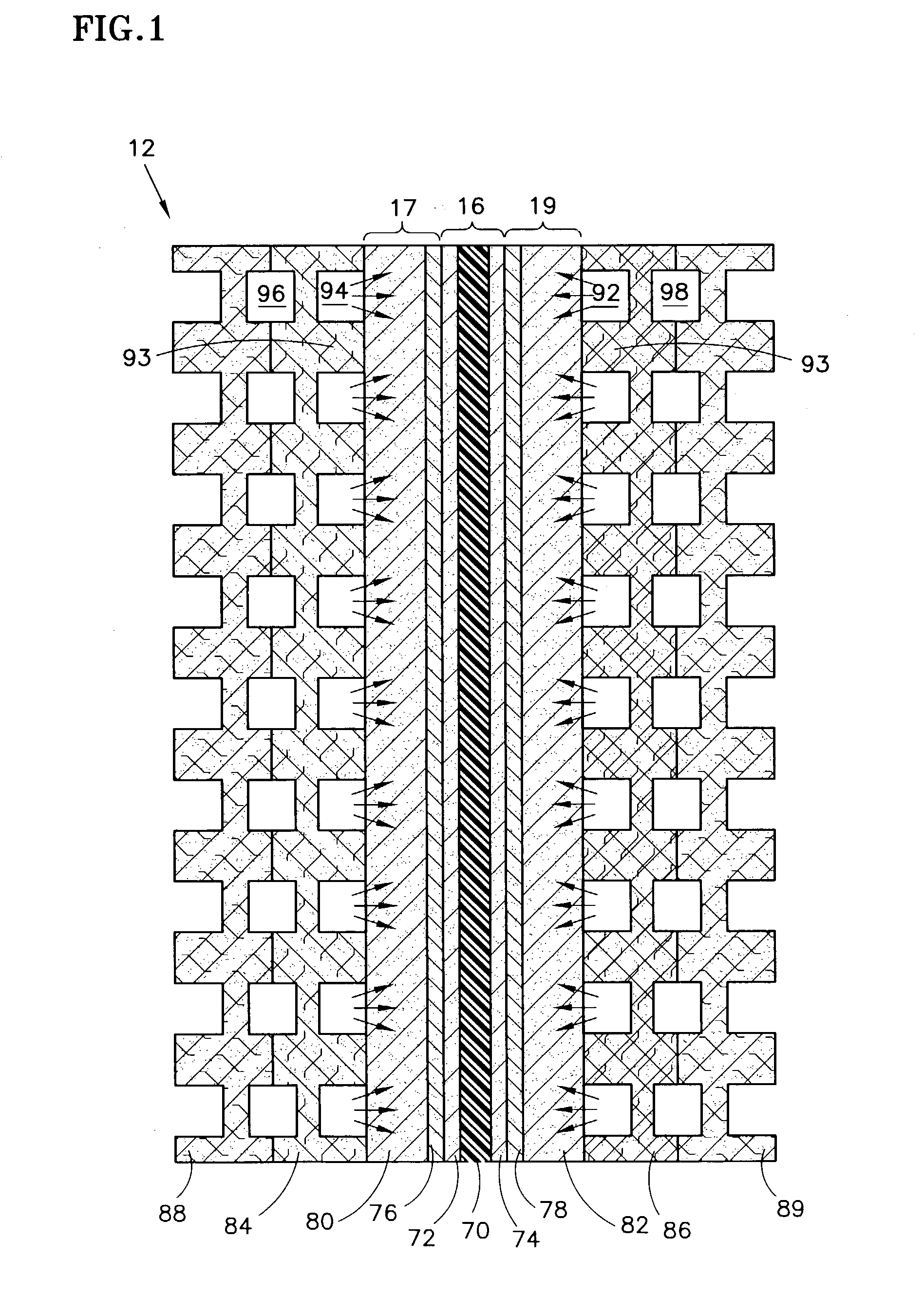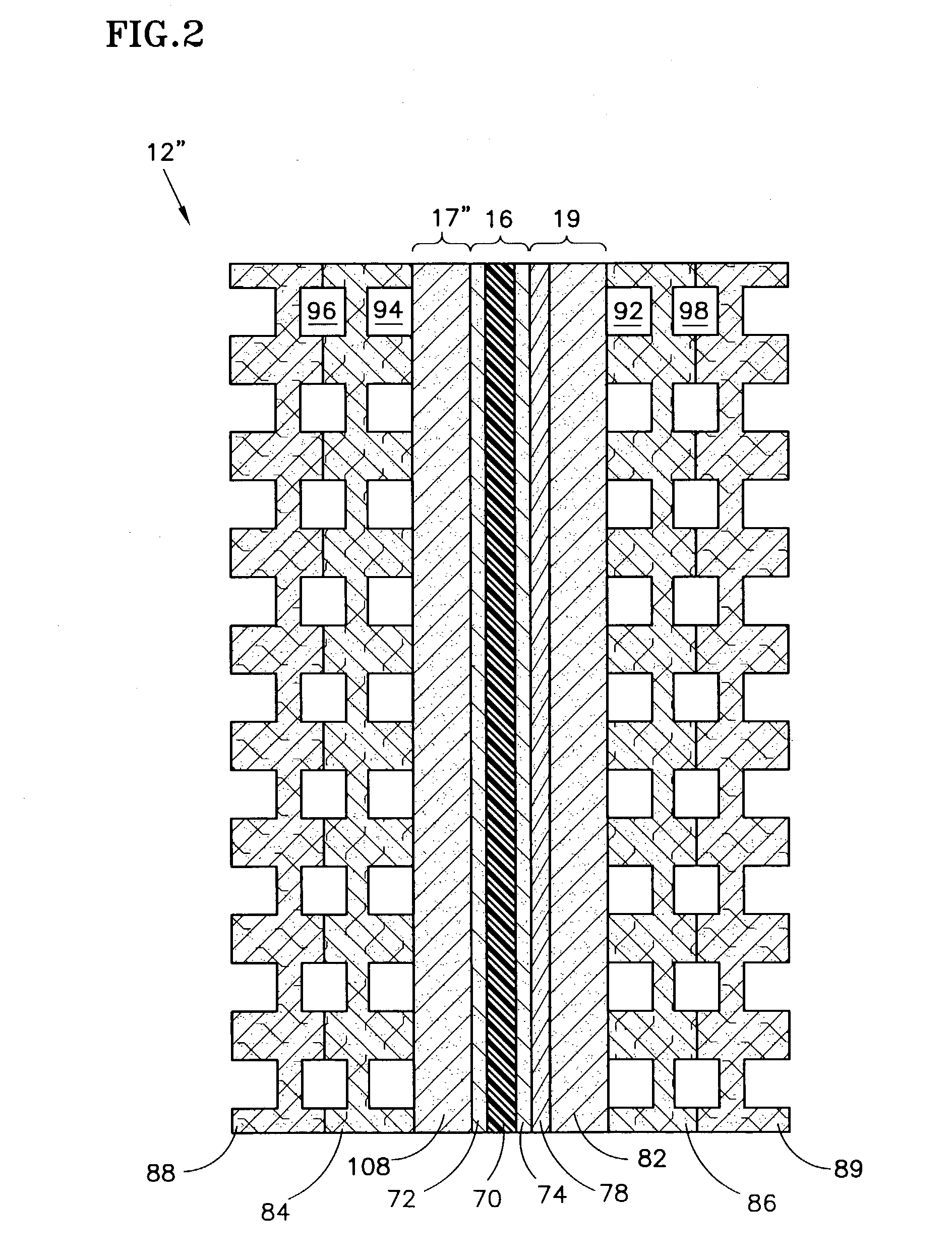Initiating operation of an electric vehicle or other load powered by a fuel cell at sub-freezing temperature
a technology of fuel cell and electric vehicle, which is applied in the direction of electrochemical generator, cell component details, cell components, etc., can solve the problems of less satisfactory performance of other experiments, potential mechanical damage, and the ability of the vehicle to operate, so as to improve the initiation of the fuel cell
- Summary
- Abstract
- Description
- Claims
- Application Information
AI Technical Summary
Benefits of technology
Problems solved by technology
Method used
Image
Examples
Embodiment Construction
[0021] The invention may be used with a wide variety of fuel cell stacks, having fuel cells of various configurations.
[0022] Referring to FIG. 1, there is shown a cross sectional view of a typical fuel cell 12, which includes a membrane electrode assembly (MEA) 16, an anode support plate 17 and a cathode support plate 19. The MEA 16 comprises a polymer electrolyte membrane ("PEM") 70, an anode catalyst 72 and a cathode catalyst 74. The anode catalyst 72 and the cathode catalyst 74 are secured on opposite sides of the PEM 70.
[0023] The anode support plate 17 and cathode support plate 19 may include hydrophobic diffusion layers 76, 78 and hydrophilic substrate layers 80, 82. The anode diffusion layer 76 is adjacent to a side of the anode catalyst 72, and the anode substrate layer 80 is adjacent to the anode diffusion layer 76 opposite the anode catalyst 72. The anode diffusion layer 76 and the hydrophilic anode substrate layer 80 allow the fuel reactant gas, which passes through a pas...
PUM
| Property | Measurement | Unit |
|---|---|---|
| atmospheric pressure | aaaaa | aaaaa |
| pressure | aaaaa | aaaaa |
| temperature | aaaaa | aaaaa |
Abstract
Description
Claims
Application Information
 Login to View More
Login to View More - R&D
- Intellectual Property
- Life Sciences
- Materials
- Tech Scout
- Unparalleled Data Quality
- Higher Quality Content
- 60% Fewer Hallucinations
Browse by: Latest US Patents, China's latest patents, Technical Efficacy Thesaurus, Application Domain, Technology Topic, Popular Technical Reports.
© 2025 PatSnap. All rights reserved.Legal|Privacy policy|Modern Slavery Act Transparency Statement|Sitemap|About US| Contact US: help@patsnap.com



